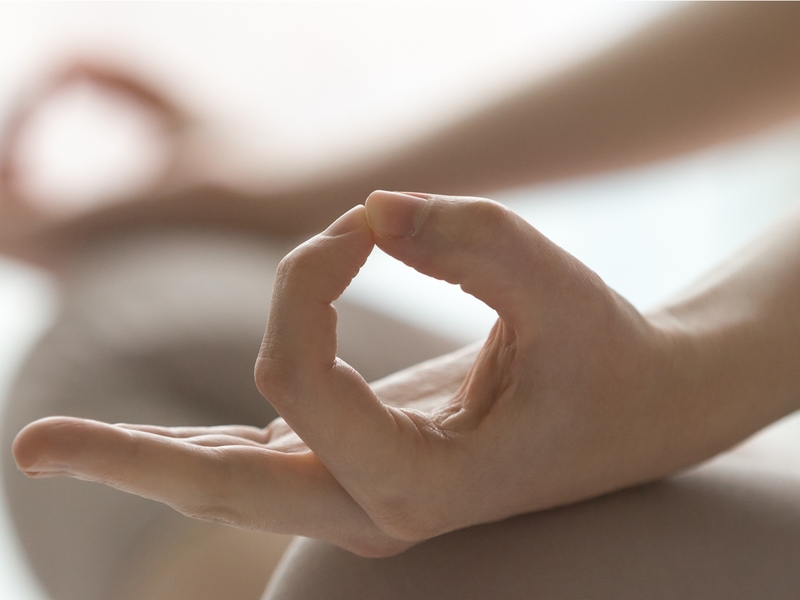10 Tips for Meditating to Relax and Help Lupus Anxiety

Before I got lupus, I had no idea what an anxiety attack felt like, let alone how to work to stave one off. I’d always used meditation for personal focus and professional clarity. Meditation and mindfulness are how I have accomplished a lot of goals over the years but I never thought they would help me with anxiety.
There are many benefits to be gained through meditation, but beginners often struggle to develop a meditation practice. There is a lot of confusion around the simple but challenging practice. A few tips can make a significant difference if you want to join me in meditation.
Meditate more effectively and enjoy greater benefits:
- You don’t need anything to meditate. It can be nice to have a proper cushion, loose fitting clothing, and a quiet location. However, you don’t need any of those things. You can meditate on the bus in your three-piece suit. You always have everything you need with you to meditate properly.
- Start with mindful breathing. Other forms of meditation can require higher levels of focus and discipline. Arguably, mindful breathing is the most valuable form of meditation. Simply focus on your breathing. When your mind wanders, gently return your focus to your breath.
- Move if you need to. That doesn’t mean squirm around in your seated position. Get up and take a walk instead. Be mindful in your walking. Ideally, you can find a peaceful location where you can still focus on your breathing, free from the worry of being run over by a car. The more distractions you have, the more challenging it will be. Sometimes you start to feel an anxiety attack coming on and you have no control over where you are. Focus on your breathing, listen to the breaths and if you really concentrate on this, you can tune everything else out and you will start to feel the calm slowly come over you.
- Use a timer. Suppose you plan to meditate for 15 minutes. It can be very distracting to wonder how much time is left. So, you peek at the clock and mentally calculate how much time is left. Use a timer instead and keep your attention where it belongs.
- Be mindful throughout the day. Use a timer app on your phone or computer to remind you to be mindful. Set the timer to notify you every 10 to 15 minutes. Take a few mindful breaths and return to your previous activity.
- Meditate several times each day. Use your trusty timer again. Perhaps you can meditate for one minute each hour or 10 minutes every 4 hours. The goal is to maintain a mindful state 24 hours per day. This is more easily accomplished if you meditate several times each day and I’ve found it has brought the amount of anxiety attacks I used to have down to a minimum.
- Be gentle. Meditation isn’t about forcing yourself to concentrate with tremendous effort. Meditation gives energy. It doesn’t take energy from you. Use gentle, persistent attention. You’ll be more successful and enjoy the process much more.
- The longer you meditate, the more important your posture becomes. Almost any position can be comfortable for a few minutes, but few positions are comfortable for 20 minutes or more. Even your comfy couch is inadequate. It’s important to maintain a well-supported position with a straight spine. Leaning or slouching will create tension and discomfort. Have you ever wondered why the full-lotus position is so popular in meditation? It’s because your ankle bones aren’t digging into the floor like they would be if you had your feet folded beneath you. It’s also very stable and allows for a straight spine. If you are fortunate enough with lupus to still be able to accomplish this position, you are in a good way. For me, I tend to use my bed whenever possible. I prop pillows up and lean back and I try to do this when I am not too tired so I don’t fall asleep.
- Avoid meditating after a large meal. Meditation isn’t a form of sleep. A big meal can make you sluggish and uncomfortable.
- Add time to your meditation practice slowly. Avoid pushing yourself. Five minutes is a good start, but if two minutes works for you in the beginning, do it. As long as you start, you are on the right track. Add a few minutes each week. A long session of 30 minutes per day is a worthwhile goal to work up to.
Meditation is a subtle skill that requires time and practice. Many beginners give up before realizing the benefits that meditation provides, which is why I say if two minutes works better than five, then meditate for two minutes. Remember, this is to help you, it’s not a contest.
If you make meditation one of your daily habits, I think it won’t take long before you consider it to be one of your most important activities.
***
Note: Lupus News Today is strictly a news and information website about the disease. It does not provide medical advice, diagnosis, or treatment. This content is not intended to be a substitute for professional medical advice, diagnosis, or treatment. Always seek the advice of your physician or other qualified health provider with any questions you may have regarding a medical condition. Never disregard professional medical advice or delay in seeking it because of something you have read on this website. The opinions expressed in this column are not those of Lupus News Today or its parent company, Bionews Services, and are intended to spark discussion about issues pertaining to lupus.







Leave a comment
Fill in the required fields to post. Your email address will not be published.